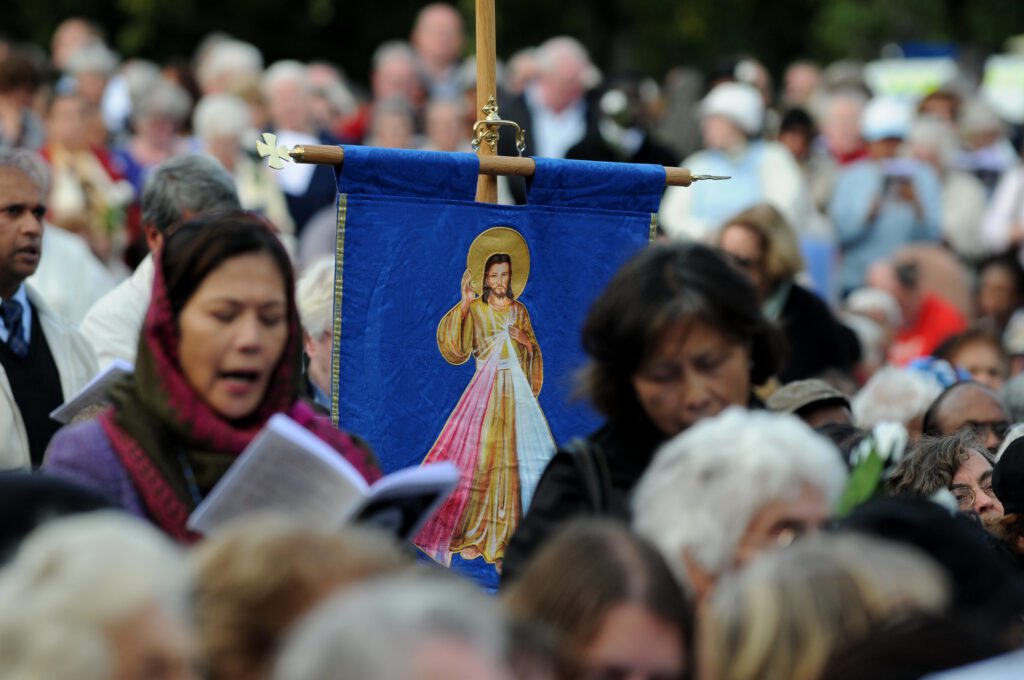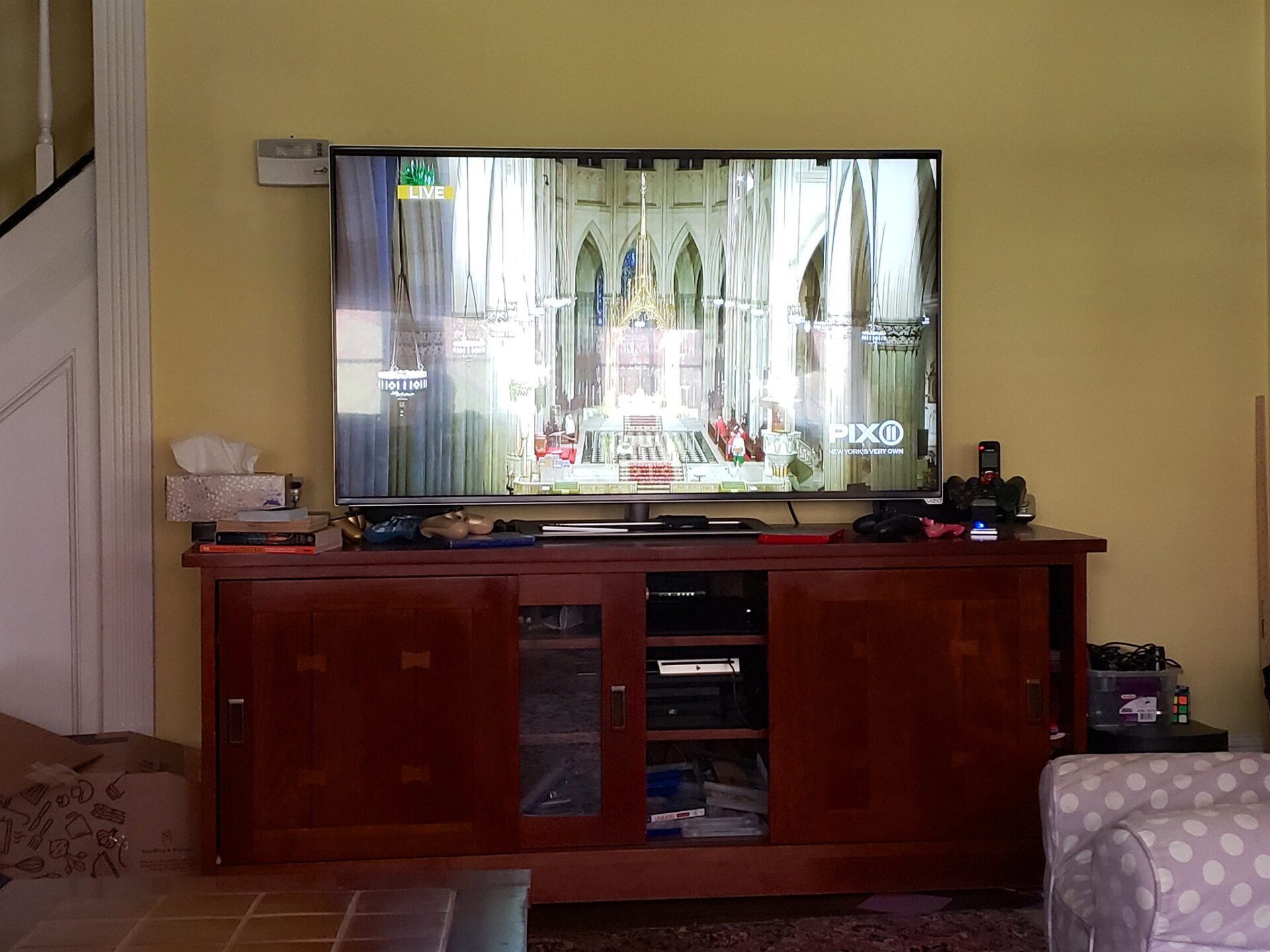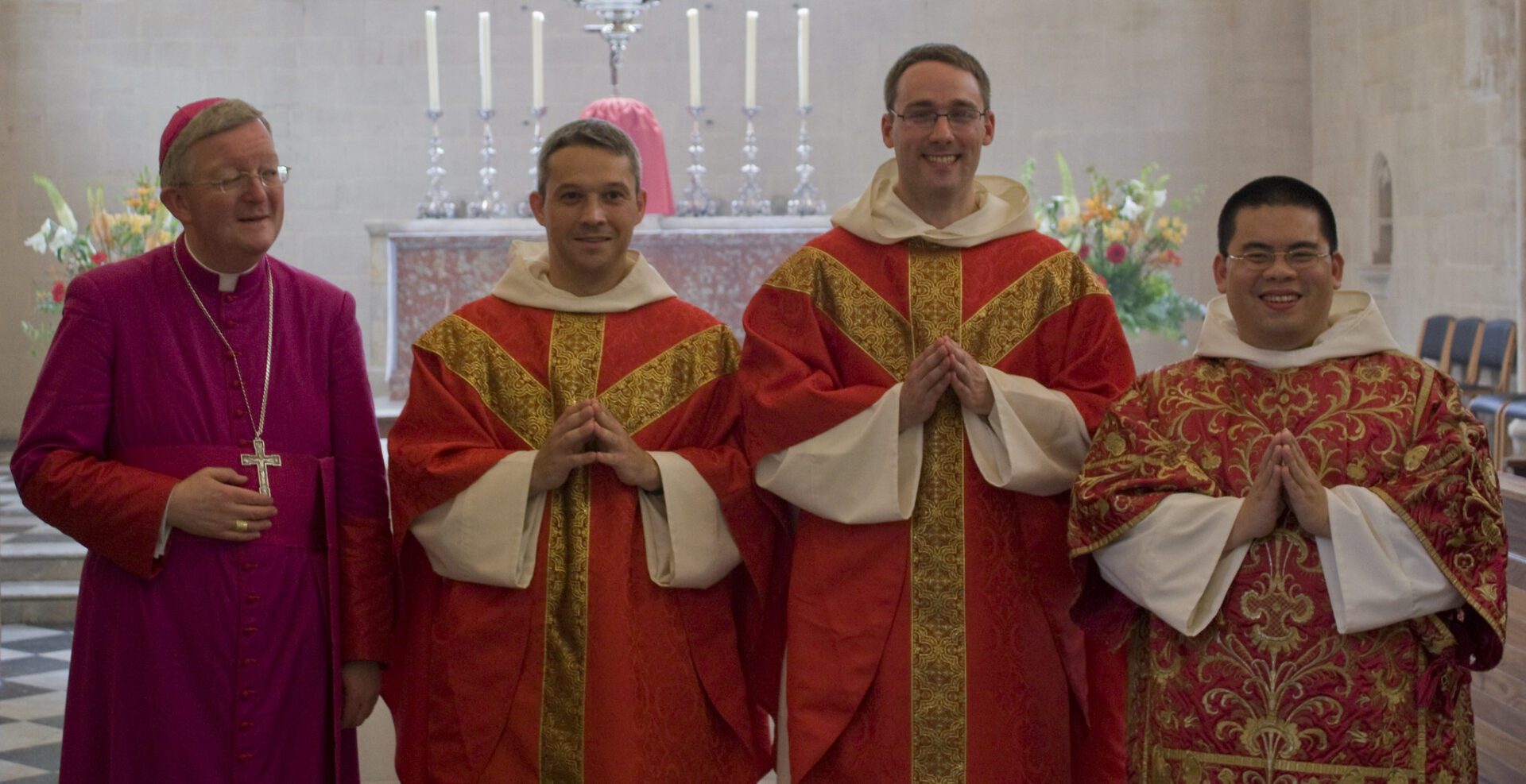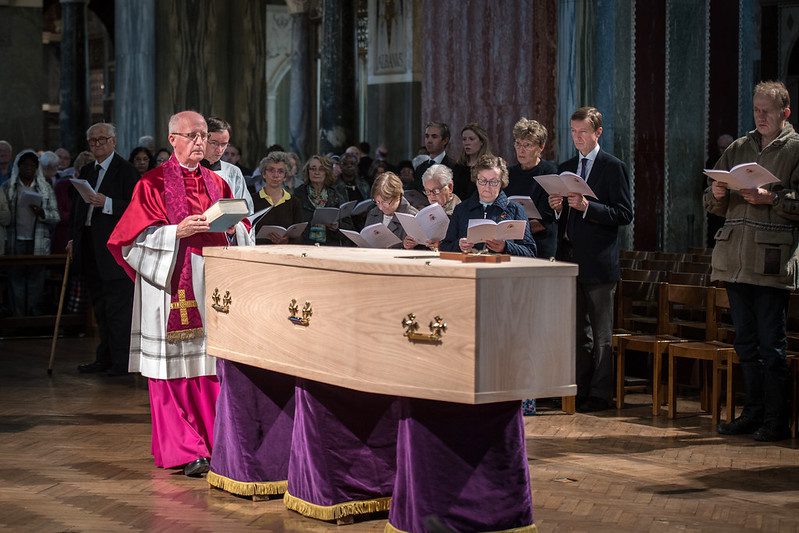The COVID shutdown of 2020-21 had a unique and unprecedented impact on Catholics: for at least several months, many dioceses closed churches, offered no public Masses even on Sundays, and dispensed the obligation of the dominical precept to attend Mass on Sunday. Catholics were recommended to avail themselves of Masses broadcast by television or online though, in a strict sense, there was no obligation to use them because a televised Mass does not fulfill the obligation1 of attending Sunday Mass.
Catholics were told that this ministerial shutdown was an expression of the “field hospital’s pastoral care” for the faithful although—to the best of my knowledge—field hospitals generally do not shut down and leave the battlefield in the middle of a war. Furthermore, following a local crisis, most hospitals conduct a wide-ranging, frank, and open assessment of their performance under stress: what worked, what did not, what should be repeated, what should not? Again, I have yet to see the United States Conference of Catholic Bishops or any local bishops for that matter leading candid evaluations of the “great shutdown” of 2020-21.
One of those assessments should be about televised Masses.
TV Guide
In 1996, the USCCB issued “Guidelines for Televising the Liturgy,” a document that received minor editorial revisions in 2014. The “Guidelines” are valuable insofar as they remind us that the liturgy is and always remains a sacred act, not a drama or TV event. That norm should guide the overall recording of televised Masses, both on the level of principle as well as of specific techniques (e.g., no excisions or canned music to facilitate the filming of the Mass). But the truth is also that those “Guidelines” have been overtaken by recent events: they never envisioned nor address the Church’s “big time” entry into broadcast/social media because of COVID.
Prior to COVID, a few dioceses and religious orders broadcast a Sunday Mass. These were mostly local undertakings, targeted at the homebound. The COVID shutdown suddenly compelled these limited undertakings to address large-scale needs. Parishes whose familiarity with social media was often rudimentary suddenly found themselves trying to provide an online Mass to parishioners.
The liturgy is and always remains a sacred act, not a drama or TV event.
The results were mixed.
To their credit, many parishes quickly learned at least how to stream a Mass online. Dioceses and orders with established broadcast Masses ramped up; beginners may have initially foundered but eventually offered something.
Let’s also examine what we learned from these efforts.
There was a palpable difference between established “TV Masses” and parochial or even diocesan start-ups. That difference comes from the fundamental distinction between a parish Mass and a “made for television” Mass with a congregation as a kind of “studio audience.”
For one, “made for television” Masses take into account the audio-visual demands of the medium. Parish Masses offered online generally do not (and probably should not).

An example: visual angles. “Made for television” Masses usually use multiple cameras. They fade in and out, e.g., from the conclusion of the celebrant’s Collect to the reader of the First Reading. They may offer different views, e.g., the “Sunday TV Mass” sponsored by the Archdiocese of Toronto cuts off to a stained-glass window depicting singing angels during the Sanctus and another window depicting Peter receiving the “keys of the Kingdom” for the Pater. Such transitions are natural for a visual-intensive medium like television, something we expect from “regular” television or movies.
Parish Masses, by contrast, tend to have a fixed angle: there is one camera, and it concentrates on one point. Generally, it has to be broad to ensure it encompasses everything, e.g., the celebrant at the altar, the Scripture readers at the lectern or ambo, etc. That fixed angle in turn gives a kind of amateurish feel to the production. There is one scene. The wide angle needed to include the readings generally means the Eucharistic Prayer looks remote. Sometimes, the angle is even strange, though I have gotten used to it: St. Dominic’s, the Rosary Shrine in London, streams daily Mass. Its camera must be up on a column because it looks down on the sanctuary from something like a 45° angle. In that way, it encompasses almost everything happening in the sanctuary (except that the celebrants step out of the visual stream when distributing Communion), but it almost seems the viewer is looking down from heaven on the celebration of Mass. Whether that was intended or serendipitous, I know not.
A parish Mass is, obviously, not primarily intended for televising, so we should neither expect nor want the greater complexity (e.g., multiple cameras) a “televised Mass” affords. After all, the “televised” celebrant and his congregation are aware this is also a media production for another audience. That is not—and should not—be the rule for parish Sunday Mass.
Remember, even at in-person Sunday Masses, people’s eyes move. They watch the celebrant ingress. They see him at the altar. They may look at the reader or they may pick up their pew missalette. At times they may even close their eyes in prayer and look at nothing. Shifting “televised Mass” angles approximate these natural human changes; the typical online parish Mass doesn’t.
My point is that there is an inherent tension between a Mass that is celebrated with the actual participation of a staged congregation (yet one hopefully still at prayer) but intended for broadcast versus a Sunday Mass whose primary “audience” is those in church but also made available to shut-ins and others. The 1996 “Guidelines” envisioned this distinction when they spoke of “live,” “delayed telecast,” and “pre-recorded” (with a preference for “live”).
There is an inherent tension between a Mass that is celebrated with the actual participation of a staged congregation (yet one hopefully still at prayer) but intended for broadcast versus a Sunday Mass whose primary “audience” is those in church but also made available to shut-ins and others.
But those distinctions don’t always work. Broadcast Masses (as compared to streaming on one’s own social media channel) usually have to fit into fixed time slots,2something that can be extremely tricky in live broadcasting. The “delayed telecast” (recorded earlier in the day, broadcast later) seems to face the same dilemma. The “Guidelines” rightly insist this is a liturgy, not a production, so they rightly object to anything being left on the cutting room floor, and to the use of recorded music. But if one must fit certain time parameters because that is what is available in that broadcast medium, one might need to cut some verses of a hymn (or, probably more rarely, add them). Whether and how that should happen requires liturgical and theological discussion alongside the technical production issues.
Real Stage Presence
Another lesson our COVID foray into media should have taught us is the need for priestly training in modern communications. That is sorely lacking. While Catholics have long lamented poor preaching skills, our COVID experience also made manifest the utter lack of preparation of most priests to be in front of a camera or online.
Case-in-point: I remember one priest with male pattern baldness. He was apparently used to reading his homily from notes so, on camera, we were treated to seven minutes of his inclined head, his bald crown on view, reading. Given that St. Paul VI abolished tonsure as a sign of admission to the clerical state back in 1972 in Ministeria Quaedam, we didn’t need proof of Father’s clerical bona fides. Put bluntly: one needs to know how to act (and I don’t pick that verb pejoratively) in front of a camera!
Priests who have not learned to articulate find that problem accentuated online: Father Mumbles does not improve on television. Indeed, even more priests struggle with the technical side of being heard because an online targeted transmission requires good audio, and priests sometimes don’t pay attention to where the microphone is. The good acoustics of a church can sometimes compensate for that; broadcast media are less forgiving because they are less adaptable.
COVID led to many parishes simply doing what they thought necessary to bring the Mass in some form to Catholics, at least online. What of the future? Should such Masses go away?
Having said that, this will be another difference in online parish Masses. When Father preaches to a real congregation at a real Sunday Mass, he should not fix his gaze (as a TV preacher can) on the camera. He will look at different parts of the congregation, which he should, but a pastor’s total indifference to the camera will come across as “ignoring” the online viewer. That fact will be even more accentuated for those remaining clergy who combine preaching with restless leg syndrome, i.e., who still feel a need to walk around during the homily.
In addressing the particular “celebration skills” a priest offering Mass in front of a camera needs, I am reminded of my experience as a seminary dean trying to hire a priest to teach those skills. Our curriculum presupposed some homiletics course each year, but they were being staffed by adjuncts, i.e., local priests deemed good preachers. The arrangement offered no continuity for students or in curriculum. Besides, the courses were traditional in terms of preparing priests to preach at Mass in a parish. I was convinced we also needed priests who could speak on radio or TV, even “do something” with that new thing called “the world wide web.”
We announced a hiring. It resulted (no joke) in six ministers, two rabbis, and a priest.
We got the ministers because, given the Reformation’s primacy of Word over sacrament, Protestant clergy long ago focused on preaching. Because of the Jewish focus on the Torah, the same was true with rabbis. But I had only one priest: because the number of Catholic institutions offering a terminal doctorate in preaching back then was tiny, the number of graduates was likewise small.
In the end, the hiring went nowhere because the priest was coming from another diocese and there were all sorts of questions (including financial) about his relationship to us, the diocese he was working for, and his home diocese. The real point, though, is how limited is the number of clergy ready to train other clergy in preaching and media skills. An informal survey I did of seminaries at the start of COVID tells me it largely remains so, 25 years after my abortive attempt to hire in that field.
The Program of Priestly Formation requires training in preaching, but it needs to address three corollary issues: (1) priests today just don’t preach, they need to evangelize in broader, media-related contexts; (2) public speaking is no longer a graduation requirement in many undergraduate schools, forcing seminaries to start from scratch; and (3) the growing numbers of foreign-born clergy in U.S. dioceses often requires both compensatory English as Second Language courses and extra work on accent coaching in public speaking. Those tasks will add time to the “usual” four years of post-graduate seminary education.

Channels of Grace?
COVID led to many parishes simply doing what they thought necessary to bring the Mass in some form to Catholics, at least online. What of the future? Should such Masses go away? I am of two minds on that question. On the one hand, yes: their existence may help continue depressing genuine Mass attendance, which has not wholly recovered since the “field hospital” struck tent and closed down. On the other hand, no: one Sunday Mass live streamed from one’s parish does represent tangible outreach to the homebound of that parish in a way that establishes a “community connection” no professionally produced “TV Mass” can.
But, if such online Masses continue, they will also raise other practical issues, e.g., right now, there are certain copyright licenses that regulate the use of hymns in a broadcast, etc. How will that apply in a streamed, maybe even an “on-demand,” environment? In some countries, the issue is compounded by needing consent of all people whose faces appear on screen.
We are living in a “virtual” age. That reality has benefits. But it also has downsides because human beings are not “virtual” but real creatures.
Beyond the practical questions of what an online Mass should “look” like—in terms of what the medium demands—I have further theological and pastoral questions.
My core issue centers around “participation” because spatial incarnation means “presence.”
We are living in a “virtual” age. That reality has benefits. But it also has downsides because human beings are not “virtual” but real creatures. Ten-thousand “virtual” friends don’t equal one real one: just ask little Ebenezer Scrooge “with his books and his Ali Baba,” left abandoned in the English boarding school of his youth. Or ask the kids who are suffering not just intellectual but socio-emotional deficits from extended periods of “online” (i.e., non-personal) COVID schooling. “Virtualization” tries to cancel space and time.
“Virtualization” is particularly inimical to the Catholic liturgy which, by its incarnational nature, presupposes real “body and soul” participation. That is ultimately why Sunday “TV Masses” did not and cannot “count” towards participating in Sunday Mass.3
But “virtualization” jells well with the gnostic/dualist streak of contemporary culture that depreciates the body and reduces reality to states of mind and intention. That is the message the larger culture is sending. The Catholic incarnational principle is, right now, the strongest cultural counterpoint to that message. One must, however, ask whether our “virtualizing” the liturgy abets the worst elements of our culture.
Another reason we ought to do a post-mortem of the COVID shutdown is precisely the question: how many Catholics have now come to believe that “TV Mass” is “as good” as a real Mass? And how many have used that temporary palliative as a waystation eventually to sloughing off any Mass, real or virtual? In other words, how much did this experiment accelerate the secularization of the Church, both among those nominally remaining as well as among those for whom it was the last thrust out the locked door?
That denigration of the incarnational principle also arguably had real consequences for our sacramental and especially our Eucharistic theology. The COVID lockdown and TV Masses revived an earlier spiritual discipline that had fallen into eclipse in the post-Vatican II era of infrequent Confession/frequent Communion: “spiritual Communion.”
How many Catholics have now come to believe that “TV Mass” is “as good” as a real Mass?
In earlier times, Catholics resorted to “spiritual Communion” because they did not consider themselves worthy or prepared to receive Communion. Sometimes that was an issue of scrupulosity, but it also often beneficially made Catholics aware of the need for proper and proximate spiritual preparation prior to receiving the Eucharist. The words of the traditional act of spiritual Communion captured this: “Since I cannot now receive you sacramentally, come at least spiritually into my heart.”
When online and televised Masses started reciting “acts of spiritual Communion” during the COVID shutdown, I noticed a subtle change. The Toronto “Sunday TV Mass,” for example, omitted the words italicized above. But, in dropping “at least spiritually” from the prayer, one gave the impression that spiritual Communion was equivalent to, “as good as,” real Communion.
That is really wrong.
Pushed hard enough, it is subversive of the whole structure of Catholic sacramental theology: why do we need sacraments if what they signify is accomplished “spiritually?” If “spiritual Communion” is “as good as” sacramental Communion, what does sacramental Communion add? Communal participation? A “shared meal?” Isn’t this a “virtualization” of the Eucharist?
And, if we can “virtualize” or “spiritualize” the Eucharist, I suggest then that the American bishops’ “Eucharistic renewal” will not achieve what it hopes to, because if we are sending the message that “spiritual Communion” essentially does the same thing as the genuine Eucharist, why bother? What do the sacraments really add? Aren’t they nice but ultimately optional extras—assurances of grace about which we should not trouble from the hands of a “merciful” God?
Time-Space (Dis)Continuum
Recent authors writing in sacramental theology—Romanus Cessario and José Granados, in particular—have signaled the impoverishment of our sacramental theology that comes from erroneous mindsets that understand them more as celebrations of what God has accomplished and less as prerequisite to God normally accomplishing what they signify. In other words, what do sacraments cause? In that sense, should we not ask whether the COVID emphasis on “spiritual” Communion is subversive of the sacramental order in general and appreciation of the Real Presence in particular? Does it not open the door to a reverse but dilute form of Donatism, one that renders the human minister (and physical sacrament) superfluous, a dispensable “earthen vessel” ultimately unnecessary to the graced action of the Divine Minister? Again, such thinking ultimately destroys the sacramental system as a whole.
In my judgment, the physical, the space issue, is paramount and poses serious theological issues. But men are spatio-temporal creatures, and some forms of “broadcast” Masses raise questions about time, too.
As noted, the USCCB’s 1996 “Guidelines” declare a preference for “live” transmission, but that is unrealistic: the Pope’s live Mass is a news item that can take as long as it need to, but not the average Sunday Mass. For many “broadcast” Masses are pre-recorded, not just because of technical issues (e.g., making sure one “fits” the broadcast space) but because of the availability of “personnel” (priest, “congregation,” technical staff). That means the Mass will likely not be celebrated on its proper day, e.g., a Sunday Mass will likely be recorded on a prior weekday. Once upon a time that was almost unavoidable: 45 years ago, when I was involved in production of the “Polish Radio Mass” from Michigan’s Orchard Lake Schools, we had to record earlier because the tapes needed to be mailed physically to a Rhode Island station that carried us. Today, online delivery largely obviates that problem, though other issues arise, e.g., adding closed-captioning for the hearing-impaired. But it still means that some Masses will be celebrated on a day other than when that liturgy is proper. How, under such circumstances, do we ensure that the liturgy remains liturgy and not a “commodity” requires further discussion.
Televised Masses are not likely to go away and, at least in some limited ways, shouldn’t. That said, they pose a multiplicity of problems—technical, logistical, canonical, pastoral, liturgical, and sacramental—that we cannot ignore.
Footnotes
For a treatment of the theological foundation and rationale of a Christian’s obligation to participate in communal worship on Sundays and holydays of obligation, see the Catechism of the Catholic Church, nos. 2180-83. See also the Code of Canon Law, Canons 1247 and 1248. Note that, in the absence of a Eucharistic celebration, Canon 1248 §2 urges Catholics to participate in a parish-based Liturgy of the Word, if available, or at least “devote themselves to prayer for a suitable time,” alone, as a family, or several families gathered together. No mention is made of watching televised Masses.
- A televised Mass slotted for a 30-minute broadcast window, for example, probably actually has a maximum of 28 minutes and 30 seconds for the “content” of the Mass, given transitions to/from the “program.”
- Analogically, years ago, there used to be a question in the sacramental manuals about whether one could validly confess by telephone. The answer was no, because it was not a “real presence” for the sacrament.


